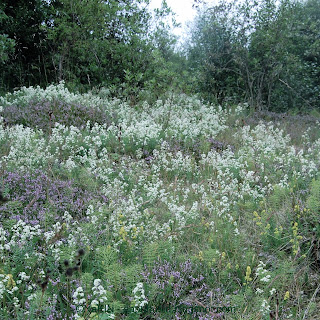 |
| They may be a bit smaller that store bought, but what taste. Our dinnerware is Maria from Rosenthal designed in 1916. I fell in love with the glass bowls. We use it every day. |
I have completely neglected to pick Birch leaves, and there are so many trees here that I felt I could pick them whenever. They weren't exotic enough to begin with, but now I want them and I want a lot. They are good in tea as a diuretic, although I don't really need that as such. I just want to have a large jar of it. And then there are the plants that I should have picked in their prime in early summer that are now past their best. So I am too late. Oh, horror of all horrors! I actually have to wait until next spring. And I am not particularly good at waiting.
But I did find something new the other day and I'm ecstatic. I found Raspberry bushes growing by the big river that runs through the city. They are quite close to my allotment garden and seem to have been planted in the 50's or 60's. They have spread quite a bit in those decades as they are a bit rampant and not something that is suitable to my small garden. After I found them I visited again, this time with a basket and picked some raspberries. The berries are almost too ripe, but I managed to get a bowlful. And they were so good. I have been eating them with ice cream, chocolate sauce and whipped cream. Very, very healthy.
But I did more than that. I picked Raspberry leaves. They have medicinal qualities as so many plants have. They are particularly good for pregnant women and during childbirth. the leaves supposedly tone the uterus and pelvic muscles. But they can also be used for PMS, bedwetting, sore throat, burns and mouth ulcers. I just love the list of things that each plant can manage to treat. But one thing is for certain, they contain vitamins C, E, A and some b (niacin), calcium, magnesium, manganese, selenium and iron. Who needs pills?
But I also was given some rooted shoots and have planted them in my allotment. The allotment community is planning to plant berry bushes all around the area and that way we should all get our share of berries, Red currants, Black currants and now Raspberries. I can't wait for next summer and this one is hardly over yet.
.










